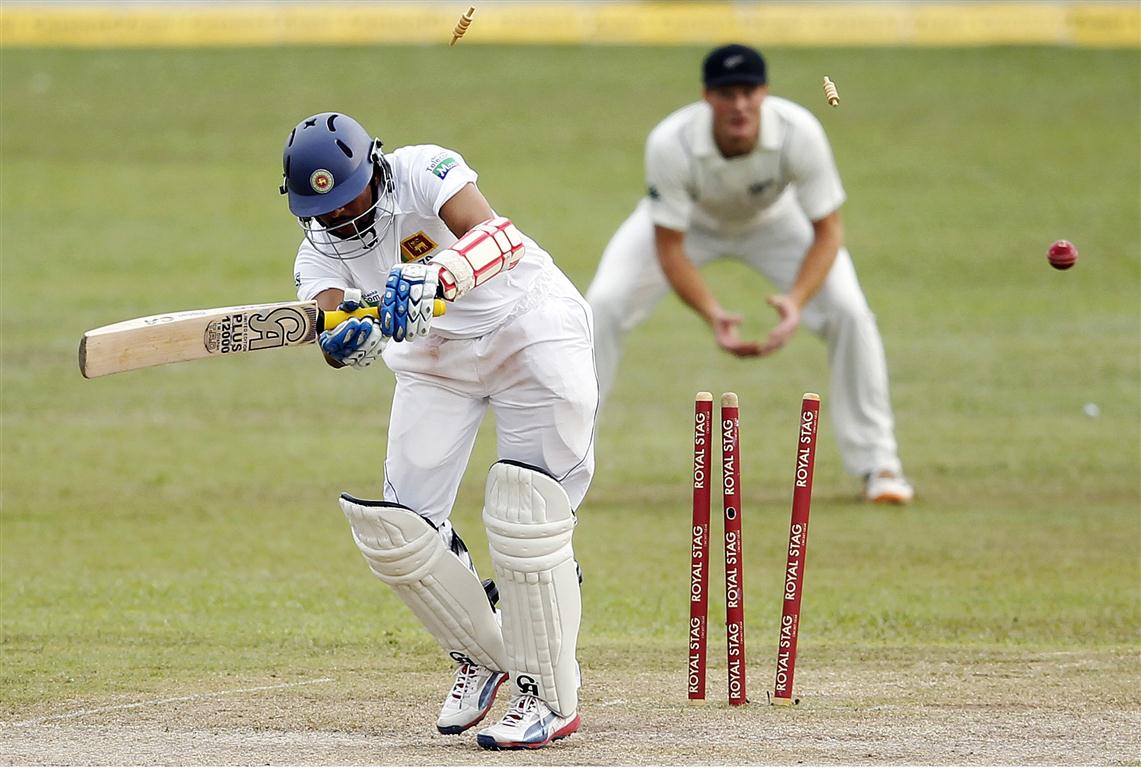‘How can we improve playing no cricket?’
These are the words of frustrated Scotland captain Preston Mommsen. This is probably the best way to sum up the state of Associate cricket. Every time an Associate teams plays; they’re playing for points, for contracts & for funding. The impact of the washout of the Oman v. Netherlands match saw the Netherlands eliminated from the tournament, after only 2 matches. Dutch captain Peter Borren summed up the horrible situation in 1 simple tweet – that 1 washed out match equated for 10% of Netherlands’ matches in 2016. That, right there, is the biggest problem with the modern game. Not only are the Associate teams not getting enough games against the top teams, but they aren’t even getting enough games against each other. Mommsen isn’t the first person to stand up and express their disgust at the state of Associate cricket. Anyone who tuned into the 2015 World Cup would have seen Porterfield make a similar plea to the ICC.
Guaranteed funding for Associate teams is a must. Over the last number of years, teams such as Scotland and Netherlands have been starved of International cricket. The majority of their T20 and ODI games have come against Associates, while they’ve each only played only a handful games against full members (outside of major events). Although Afghanistan and Ireland have both fared better over the same period of time, they have still seen very little cricket against the top teams.
Despite these problems, and the almost ‘us against the world mentality’, Associate cricket has gone from strength to strength in terms of quality of cricket and results. Ireland and Afghanistan immediately spring to mind as the top teams out there, those most capable of mixing it up with the big boys of international cricket. The game isn’t just about then though. Other teams have come to the fore with recent performances. Teams such as UAE, Nepal, Hong Kong, Netherlands and Scotland.
What is so special about this World T20?
Associate cricket is an underdog story. If the first round of the World T20 is anything, it’s an advertisement for the inclusion of Associate teams going forward. In the opening round of matches, we have seen Oman upset Ireland; while the two full members were pushed to the limit. Scotland ultimately fell to an 11 run loss due to some very good death bowling by Tiripano and Panyangara (Zimbabwe). Heavy favourites to qualify from Group A, Bangladesh beat Netherlands by just 8 runs. This is the same Bangladesh team who comfortably beat both Pakistan and Sri Lanka in the Asia Cup only a week ago. Just yesterday, we saw Afghanistan hammer Zimbabwe. The two best players of the tournament so far, Mohammad Shahzad and Mohammad Nabi simply tore Afghanistan apart. It’ll be very interest to see how they go in the main draw against the likes of England and West Indies. Not only is the inclusion of Associate teams in these tournaments better for the world game, but it’s a chance for the players to chance their arm at obtaining a domestic contract in one of the global T20 tournaments such as the Caribbean Premier League, the Bangladesh Premier League and the newly founded Pakistani Super League.
The thing that separates this World T20 from other international events is that it is the last definite chance for Associate teams to perform on the big stage until 2020. With the reduction in the number of teams playing in the World Cup (ODI), it is unlikely that we will see more than one (if even) Associate team on the biggest stage. The World T20 schedule has been changed to a 4 year cycle, rather than the previous 2. In theory, this will increase the value of the tournament, similar to that of the World Cup. The problem is, the biggest damage that will be felt by the Associate teams. With the World Cup being reduced to just 10 teams, the platform for Associate teams to show their worth is already incredibly small. The ICC needs to find some alternative for the World T20 during that lieu period. Regional tournaments and tri-series might be a solution.
With regard to Ireland, William Porterfield, Kevin O’Brien, and Niall O’Brian are competing in their eighth major tournament in 9 years. Much has changed since 2007 when they captured the imagination of the world, beating the likes of Pakistan, Zimbabwe and England.
Although Ireland’s form hasn’t been the best over the last 12 months, there isn’t a need to be overly worried. The structure of Irish cricket has improved vastly. More contracts are being offered almost every year. The new domestic structure has been a massive success in its first year. Victories over full members have become more and more common over time. Yet, despite this, the future of Irish cricket is always in jeopardy. Not because Cricket Ireland aren’t investing enough; nor are Ireland’s stocks getting smaller. The exact opposite actually. The squad depth is better than it’s ever been. But, the ICC is still closing the door on Ireland. Even bigger than that; the ICC are closing the door on a whole group of Associate teams.
What is devastating is that exciting young players such as Andy McBrine, Andy Balbirnie, Stuart Thompson and Craig Young will not be given the same opportunities as the likes of Porterfield and the O’Brien brothers. Even George Dockrell and Paul Stirling who have been around for a number of years are slowly being shut out from the game. The consistency with which Ireland and the other associates upset the test teams makes the ICC’s future plans absolutely mind boggling. Cricket is never going to get a bigger profile in any of the associate nations by confining them to play among themselves. The short-sightedness with which the ICC attempt to protect the test nations from embarrassing losses against smaller nations is going to lead to a serious decline in interest worldwide. The alienation of the associates also leads to complacency on the part of the Test nations. The current problems we see today in West Indian cricket may be solved much quicker if there was a risk that they could lose their status due to poor performances during periods of player strikes. Similarly Zimbabwe are just getting back to playing regular cricket again now and although I love to see them play well against the bigger teams, it is hard to feel like they are not being favourably treated by the ICC. They have nothing that Ireland and Afghanistan do not have except that they have been a test team for a long time. I believe we are currently at a stage where the leading associates are as good if not better than Zimbabwe. The ICC fear what will happen if the associates are consistently beating their ‘elite’ counterparts and have so come to the only solution….prevent them getting any better.
The other team which stands alongside Ireland, with an even more heroic rise to the top is that of Afghanistan. Like Ireland in 2007, Afghanistan have almost come out of no where. They have a team packed with experienced players, some who have some invaluable experience in Pakistani cricket. One thing I will say is that I would be very surprised if Afghanistan don’t pick up a win in the Super 10s.
While Ireland and Afghanistan are undoubtedly the leading Associate outfits at the moment – there are a number of other teams who are knocking on the door. Teams such as Netherlands, Oman, UAE, Hong Kong and Scotland are more than capable of performing on the biggest stage. Only yesterday Scotland recorded their first win in a major ICC organised tournament. Netherlands have been around for a long time, much longer than both Ireland and Afghanistan. Their international history has ebbed and flowed over the last number of years, but they certainly have a lot of classy players littered throughout their squad. Anyone who tuned in today would have seen the Dutch cut through the Irish batting line up with ease. Is this because Ireland have taken a step backwards? I really don’t think so. I think it’s the other Associate teams who have started taking massive strides forward. These teams are slowly but surely getting more experienced players & better squad depth. These teams also need county teams and other domestic teams and franchises to take a chance on their players.
Oman have just broken on to the scene, and have already proven their worth by beating Ireland in their first match of the World T20. It’ll be interesting to see how then go against Bangladesh later today! The team with an almost meteoric rise over the last number of months are the UAE. After winning the Asia Cup qualifier, UAE won the chance to play against Pakistan, Sri Lanka, Bangladesh & India. Already the UAE went without a win in the tournament, they created a lot of problems for Pakistan, who managed to hold on only thanks to a fantastic innings from Umar Akmal. The challenge is to ensure that these teams don’t merely fade away into the shadows, similar to the faith that the likes of Canada and Kenya have suffered.
Can the ICC really afford to shut out the Associates? I want to see the likes of Mohammad Shahzad, Mohamamad Nabi, Rashid Khan, Kyle Coetzer, Preston Mommsen, Stephan Myburgh, all the Irish players I’ve mentioned above, mix it up with the big boys.
The Solution?
It’s easy to talk about the problems and everything that’s going wrong – the difficult thing is finding a solution to these problems.
At the moment, the ODI world rankings place both Ireland and Afghanistan above of Zimbabwe. Only 12 teams are ranked. What about Netherlands and Scotland? Teams such as Oman, UAE, Hong Kong, PNG and Nepal are in early days of their development. They have made their impact, but they need to stick around a little bit longer to show that they’re here to stay. The only way to go is guaranteed fixtures. If the ICC can hold some sort of Associate tournament, with the reward of guaranteed fixtures against the likes of Zimbabwe and Bangladesh, it can only prove beneficial for all stakeholders. One possible, somewhat tricky idea is to create two divisions of cricket. Similar to that which has been suggested for Test cricket going-forward. The difficult side of the coin is that boards may object to this. After-all, money talks. The benefit? Teams are guaranteed fixtures. There is no more playing for ranking, rather teams are playing for their promotion to the upper tier. This would allow the top teams to keep on their toes and to avoid complacency.
Re-open the World Cup to 12 or even 14 teams. What about the World T20? Why did Bangladesh and Zimbabwe even have to qualify for the tournament, if they’re already full members. It would make a lot more sense to have all 10 full members qualify for the tournament immediately, while the remaining Associate teams battle it out for an extra 2 or even 4 places. The T20 game is designed to be short and snappy. Teams can comfortably play 5 games in 10 days without any problem. If anything, this would only add even more value to the tournament and increase the intrigue.
Set a standard number of ODIs and T20s for Associate members to play per year. Geographically, it makes sense for Ireland to host teams which travel to England for summer tours. This summer Ireland will benefit with fixtures against both Sri Lanka and Pakistan. But what about a tournament, maybe the ‘European Cup’? Ireland, Netherlands, Scotland & England. The problem is, the ECB don’t see the financial rewards, so interest immediately drops.
If anyone wants to check out Preston Mommsen’s comments on Associate cricket, I’d recommend you check it out! Check the link below: http://www.espncricinfo.com/ci/content/video_audio/980827.html
And here’s Peter Borren as well!
http://www.espncricinfo.com/icc-world-twenty20-2016/content/story/981269.html


